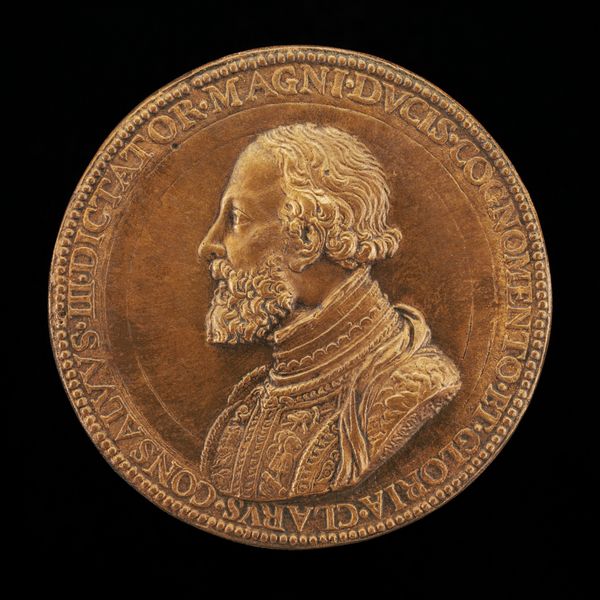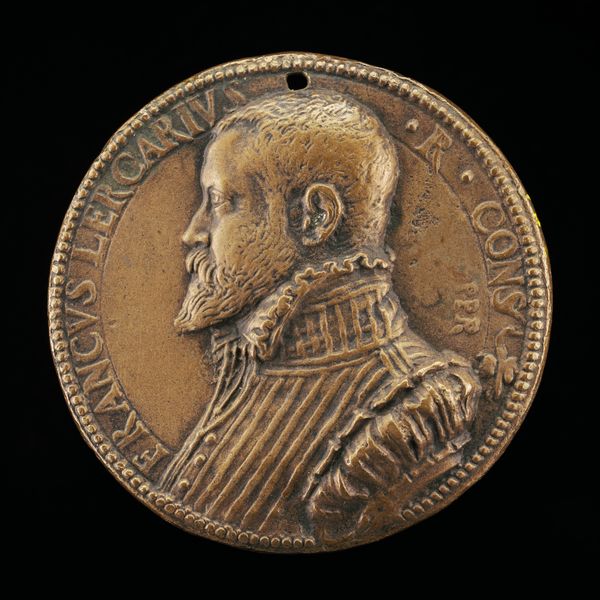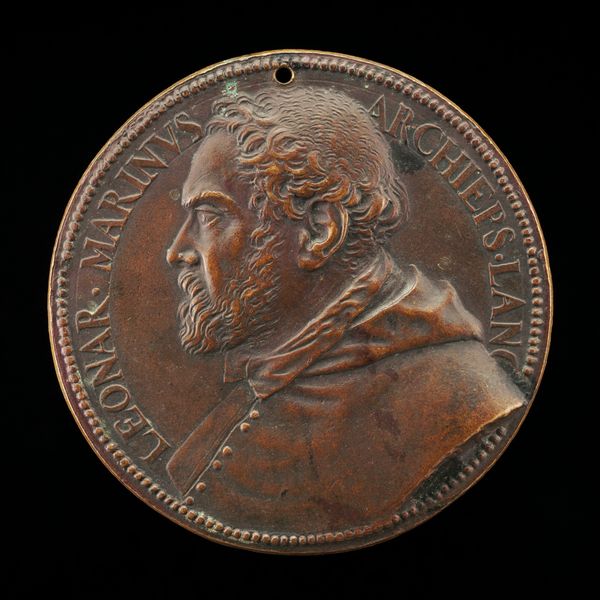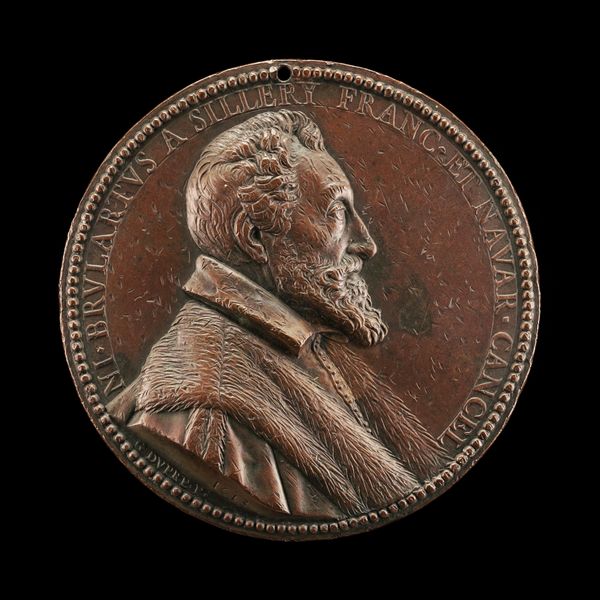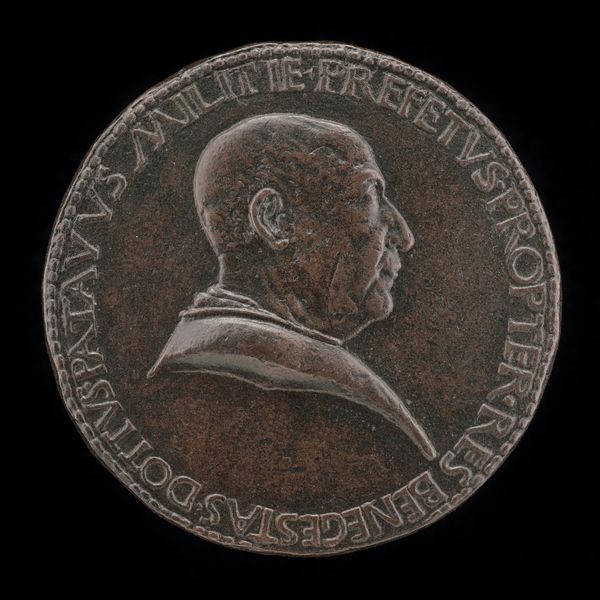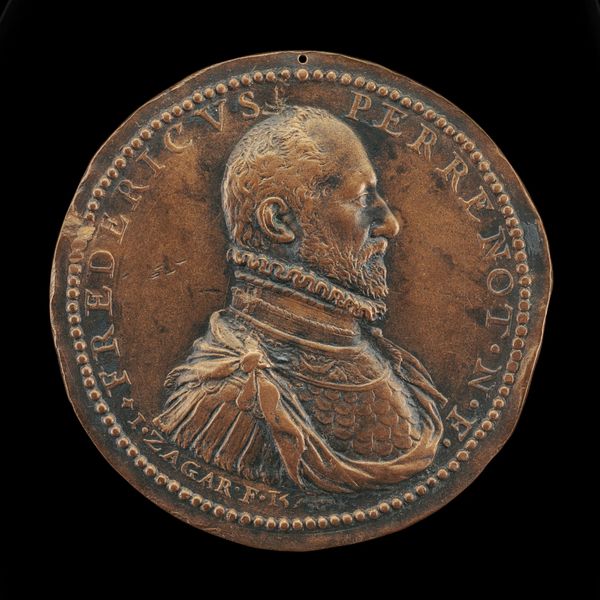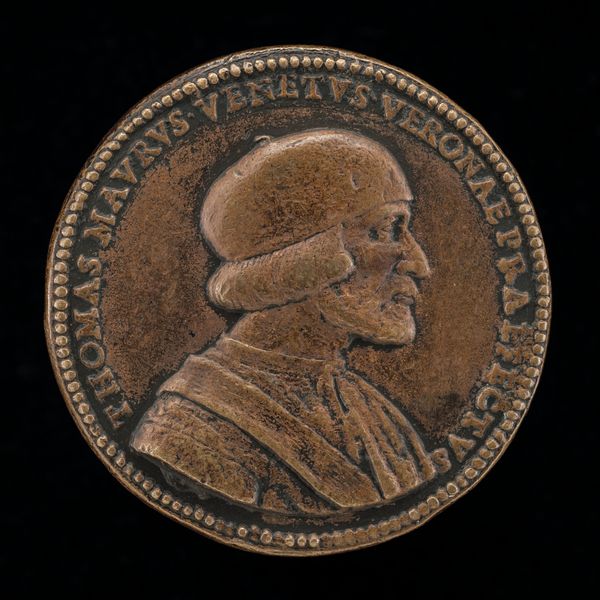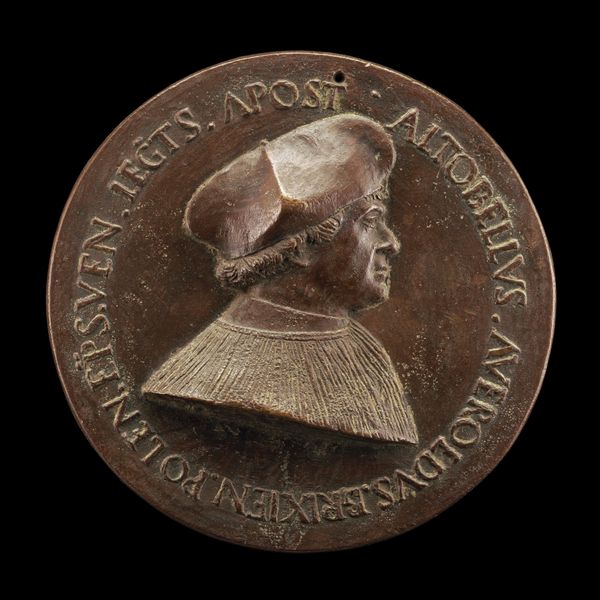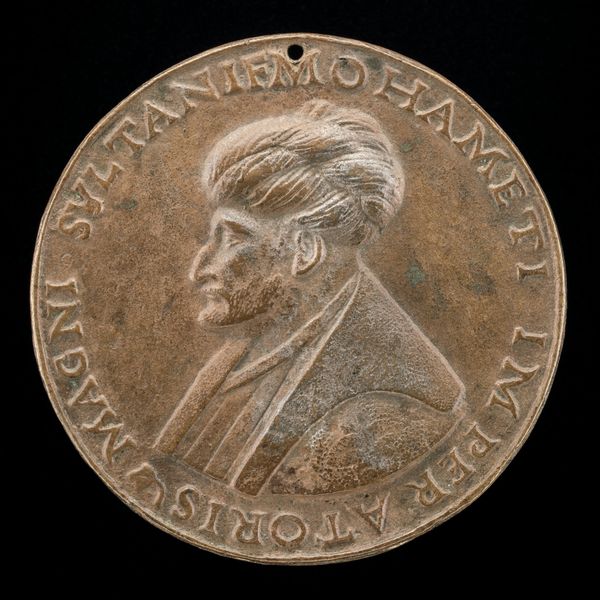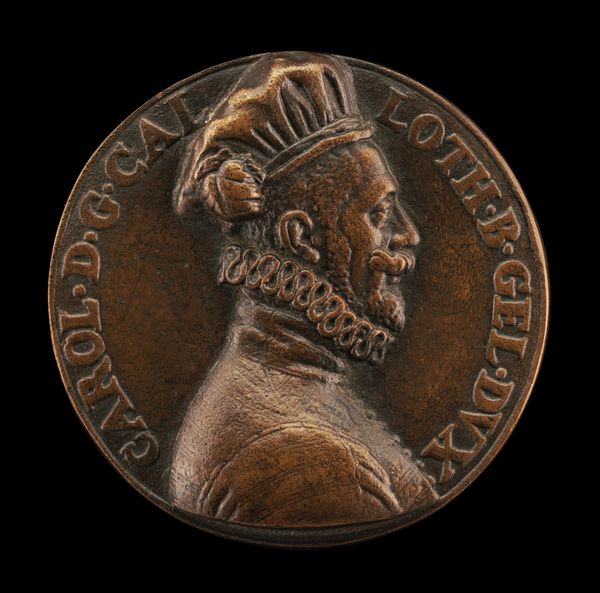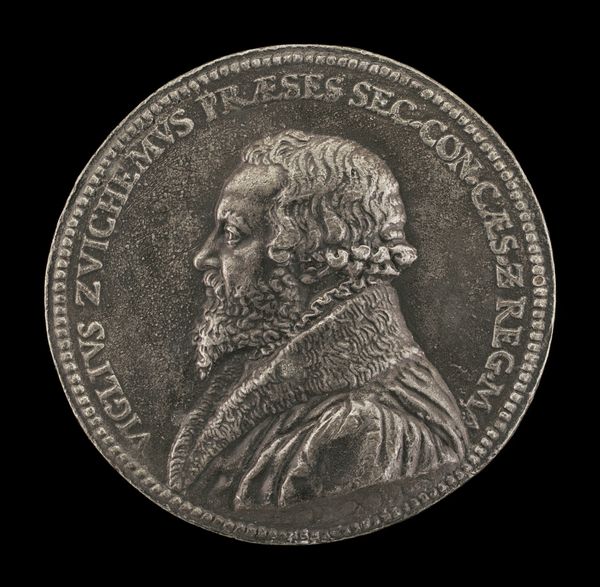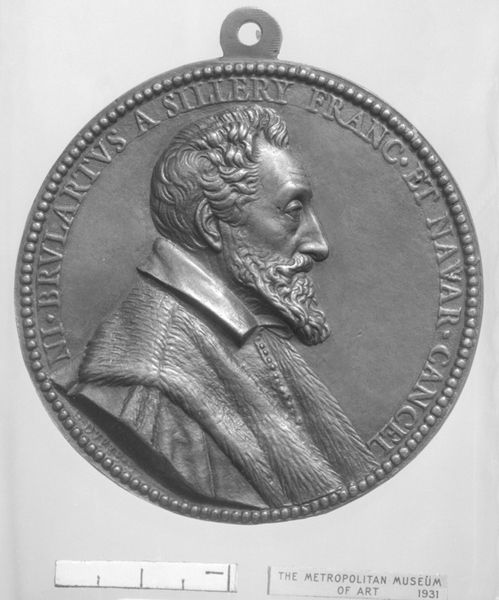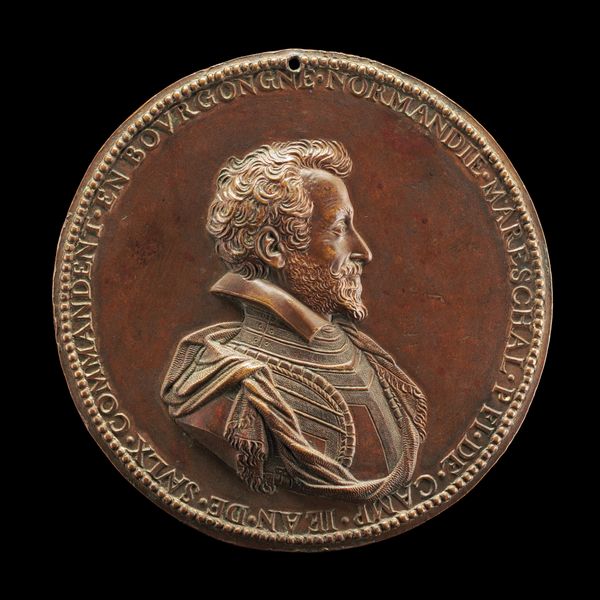![Dionisio Ratta of Bologna, died 1597 [obverse] by Felice Antonio Casone](/_next/image?url=https%3A%2F%2Fd2w8kbdekdi1gv.cloudfront.net%2FeyJidWNrZXQiOiAiYXJ0ZXJhLWltYWdlcy1idWNrZXQiLCAia2V5IjogImFydHdvcmtzLzAwNWQxYWYwLWEyNzktNGVkMS1iN2I1LWU5NjgxY2M1YjRjMS8wMDVkMWFmMC1hMjc5LTRlZDEtYjdiNS1lOTY4MWNjNWI0YzFfZnVsbC5qcGciLCAiZWRpdHMiOiB7InJlc2l6ZSI6IHsid2lkdGgiOiAxOTIwLCAiaGVpZ2h0IjogMTkyMCwgImZpdCI6ICJpbnNpZGUifX19&w=3840&q=75)
metal, bronze, sculpture
#
portrait
#
medal
#
metal
#
stone
#
sculpture
#
bronze
#
sculpture
#
italian-renaissance
Dimensions: overall (diameter): 6.71 cm (2 5/8 in.) gross weight: 122.05 gr (0.269 lb.) axis: 11:00
Copyright: National Gallery of Art: CC0 1.0
Editor: This is a bronze medal from 1592, depicting Dionisio Ratta of Bologna, created by Felice Antonio Casone. The detail is remarkable; you can practically feel the texture of his beard! What strikes me most is the precise circular composition and the relief. How does this format dictate our reading of the subject? Curator: Indeed. Note how the circular format, intrinsic to the medal's structure, imposes a controlled field. This, in turn, emphasizes the contained nature of the portrait. Consider also the use of line: the inscription acts as a framing device, both setting off and confining the portrait within. It invites scrutiny of both text and image, where the interaction gives meaning to the subject within. Editor: So, the physical boundaries are vital in directing the viewer's gaze? Curator: Precisely. Further, consider the choice of bronze. Its inherent qualities—its density, color, and potential for high relief—all contribute. The artist uses shadow to emphasize the contours, constructing the face in a very sculptural way, quite detached from reality. Are you noticing a flattening effect created by this profile perspective? Editor: I see what you mean. The relief, while detailed, doesn't necessarily create depth. It’s a deliberate stylization. The surface and its formal construction seem paramount. Curator: Yes. The goal here seems less about creating a realistic likeness and more about constructing an enduring image that conveys status. The artist draws the viewer's attention not just to WHAT is represented, but also HOW it's represented through form, medium and organization. The composition contributes to understanding the object beyond just an image of a man. Editor: I had not initially noticed that. Seeing it through a formal lens really transforms my understanding. Thank you! Curator: The power of formalism resides in its ability to distill an artwork to its fundamental visual components, illuminating how these components work in unison to deliver meaning and ultimately transcend mere representation.
Comments
No comments
Be the first to comment and join the conversation on the ultimate creative platform.
